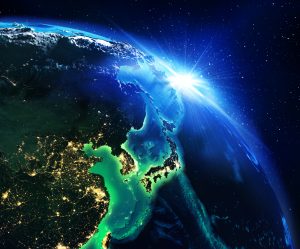On December 7, the African Union (AU) published a statement calling for the urgent rescinding of travel bans placed on some of its member states due to the South Africa’s detection of the Omicron variant of COVID-19. Currently, travelers from five Southern African countries – even some without any confirmed cases, such as Lesotho and Eswatini – are banned by over 30 countries. At the same time, citizens from European and North American countries with locally transmitted cases are being allowed to fly freely. This is all the more galling as Africa as a whole accounts for less than 10 percent of the world’s Omicron cases.
This blatant discrimination is not only based on long-standing prejudices against Africa and Africans, but is also pragmatically damaging. The countries targeted by the travel bans are suffering economically, given the limitation on the movement of people and goods, and medically, as their access to essential medical supplies and Omicron-spotting chemical reagents is being severely constrained.
Whilst the AU statement does not directly “name names,” recent mainstream media coverage has emphasized the skewed decisions of richer countries, such as the United States and the United Kingdom, to selectively ban flights only from African countries. This, again, is being carried out regardless of the evidence that both countries already have significant numbers of domestically transmitted Omicron cases within their borders, stressing how prejudiced and unscientific this approach is. However, little is being said of what is happening outside of Europe and North America.
This begs the question of whether other regions, for example Asia, are handling the detection and diffusion of the Omicron variant differently. The comparison seems particularly significant, given Asia’s notorious (and stereotyped) prudence in managing COVID-19 and the specific nature of its relationship with Africa, often portrayed through the broad brush of “South-South Cooperation.”
When looking at the policy reactions of Asian countries to the detection of the Omicron variant, three main approaches may be distinguished: the countries that have not changed their response, given that it was already at quite secure levels; the countries that have responded similarly to Western countries, i.e. by exclusively banning African flights; and countries that have taken a more holistic approach, banning or limiting entry from all countries where the Omicron variant has been identified.
Looking at the first strategy, there are only two countries in Asia that fall into this category: China and Myanmar. Both had some of the toughest entry regulations for travel even before the appearance of the Omicron variant (albeit for different reasons), and as such, did not feel the need to further strengthen their border closures. China, especially, given its pursuit of a “zero-COVID approach,” has had very stringent border controls since the start of the pandemic, but even that did not prevent the country from experiencing its first Omicron case on December 14.
Moving onward to the second strategy, six Asian countries have responded similarly to many in Europe and North America by singling out Southern African countries. These six countries are Malaysia, Indonesia, India, South Korea, Thailand, and Vietnam. While employing different methods of containment, ranging from all-out flight bans to country-specific testing and quarantine regimes, all countries targeted the same eight Southern African countries, while keeping air corridors to and from Europe and North America open and viable. Although this can perhaps be explained by these countries’ economic dependence on tourist arrivals from richer countries, it still is puzzling that all but two countries, Indonesia and India, did not apply the same strict standards to arrivals from Hong Kong, although the city reported Omicron cases on the same day (November 25) as South Africa.
Finally, four other Asian countries and territories have employed the third strategy, taking a different approach from their European and North American counterparts. These are Hong Kong, Singapore, Japan, and the Philippines. Japan opted for the equalizing, if drastic, measure of closing their borders to all non-resident foreigners, regardless of their citizenship or country of departure. In addition, Japan has also barred airlines from taking incoming bookings for the entire month of December, in a bid to dramatically diminish the entry of travelers into the country. As for the other three destinations, they have all enhanced their entry requirements, but this has been applied to all countries reporting Omicron cases, regardless of their location. The Philippines, for example, has banned all entry of travelers from 14 different countries, half of which are European nations with confirmed Omicron circulation.
In summary, it can be observed that the Asian continent exhibits a wide variety of approaches to the detection and diffusion of the Omicron variant. Whilst a heterogenous set of responses is not surprising per se, given the diversity of political, economic, and health contexts that coexist in Asia, the fact that many countries responded rationally and fairly to the variant is noteworthy, especially compared to the panicked and discriminatory measures of Western countries. Whether this Asian-specific approach may be attributed to a stronger focus on prudence and safety, or perhaps to the less colonially-tinted nature of African-Asian relationships, is unclear, but it is certainly a question worth exploring.

































